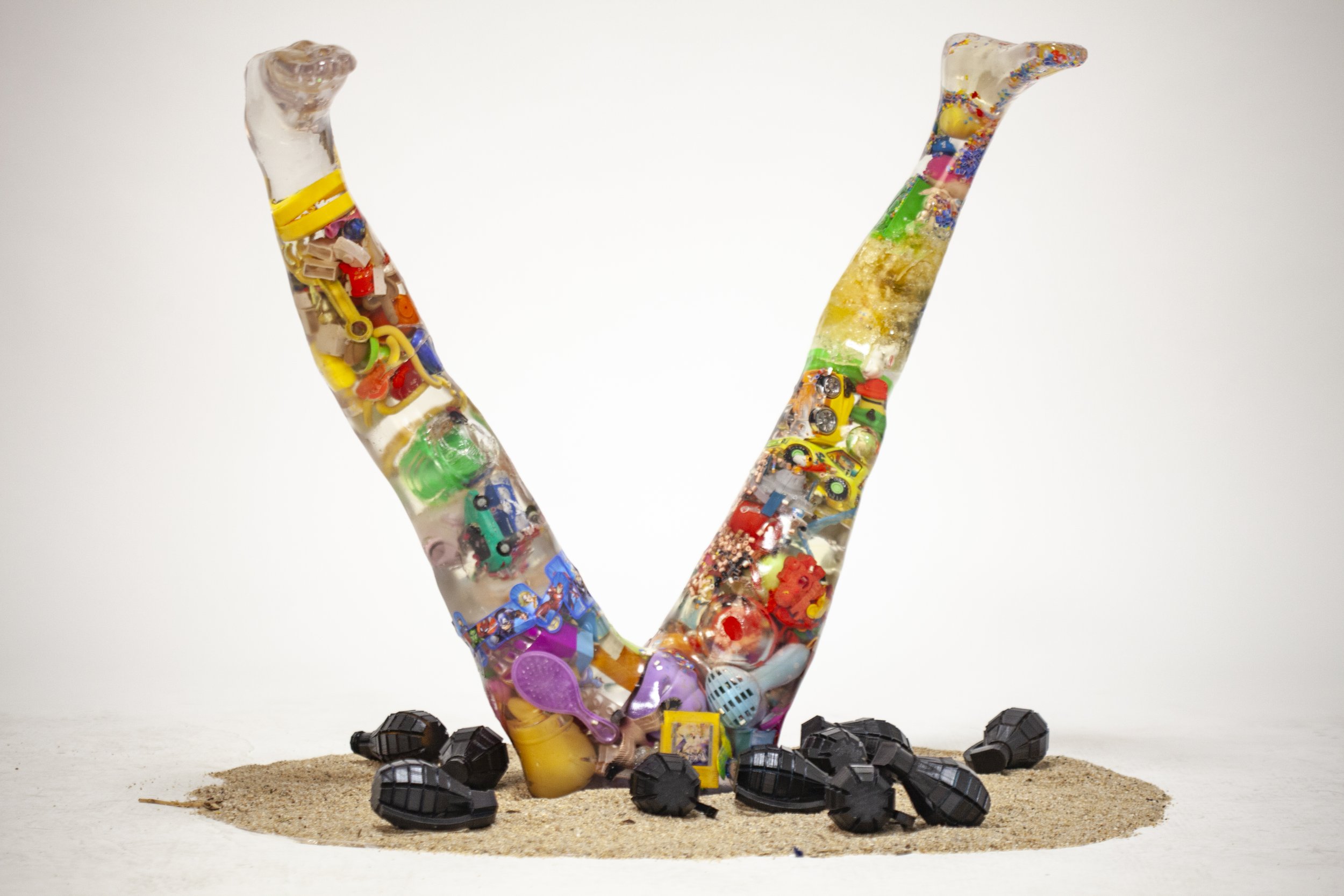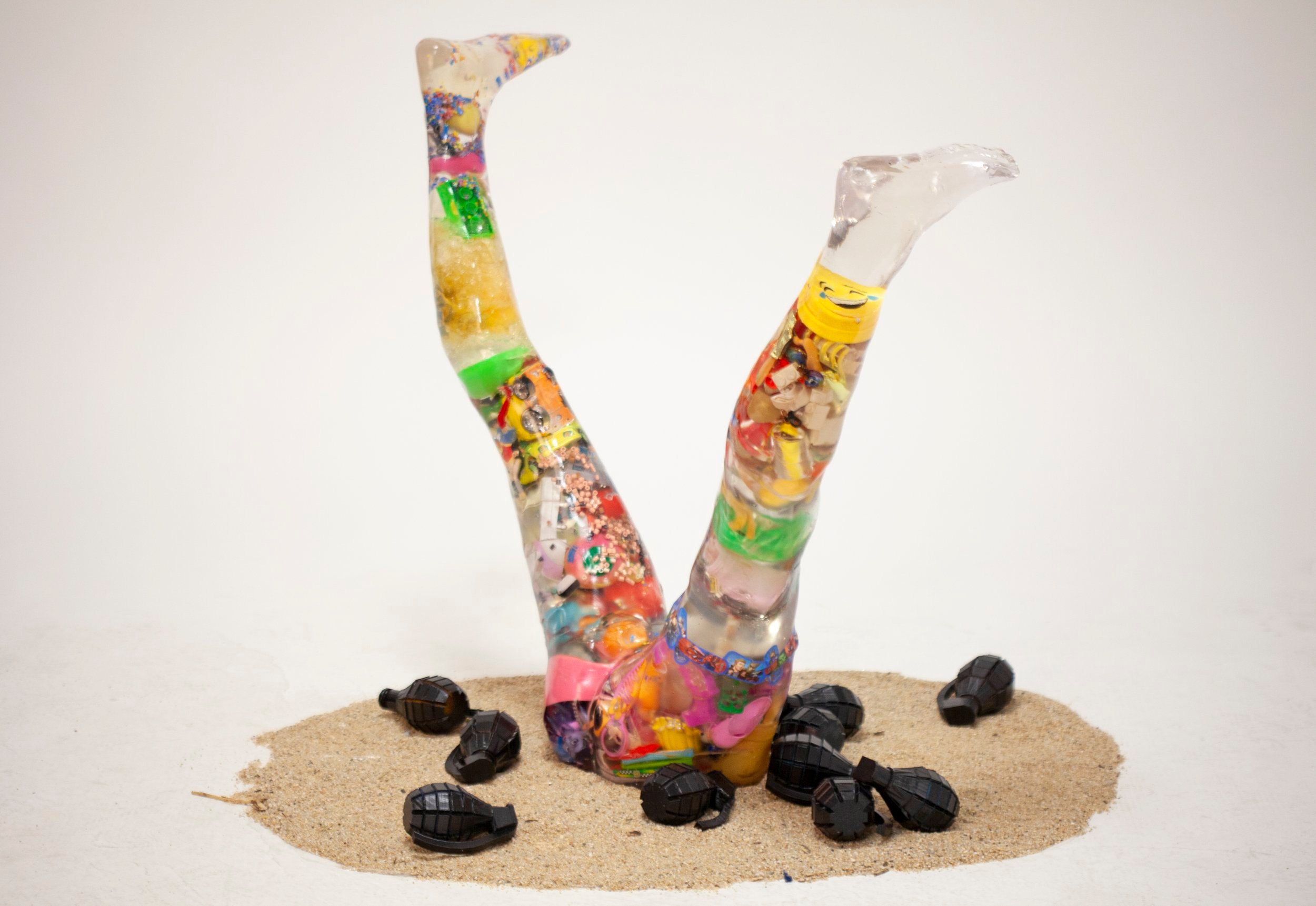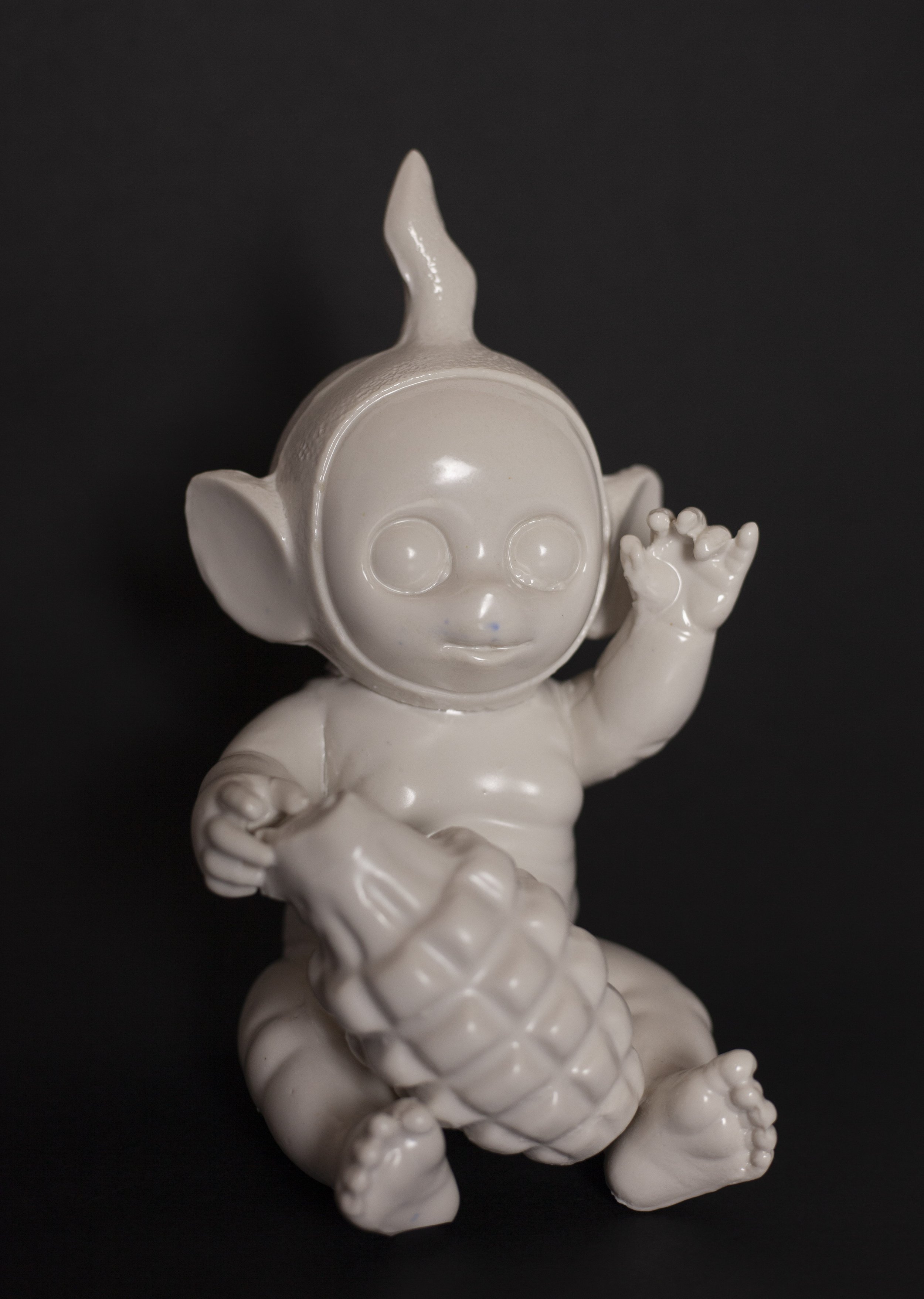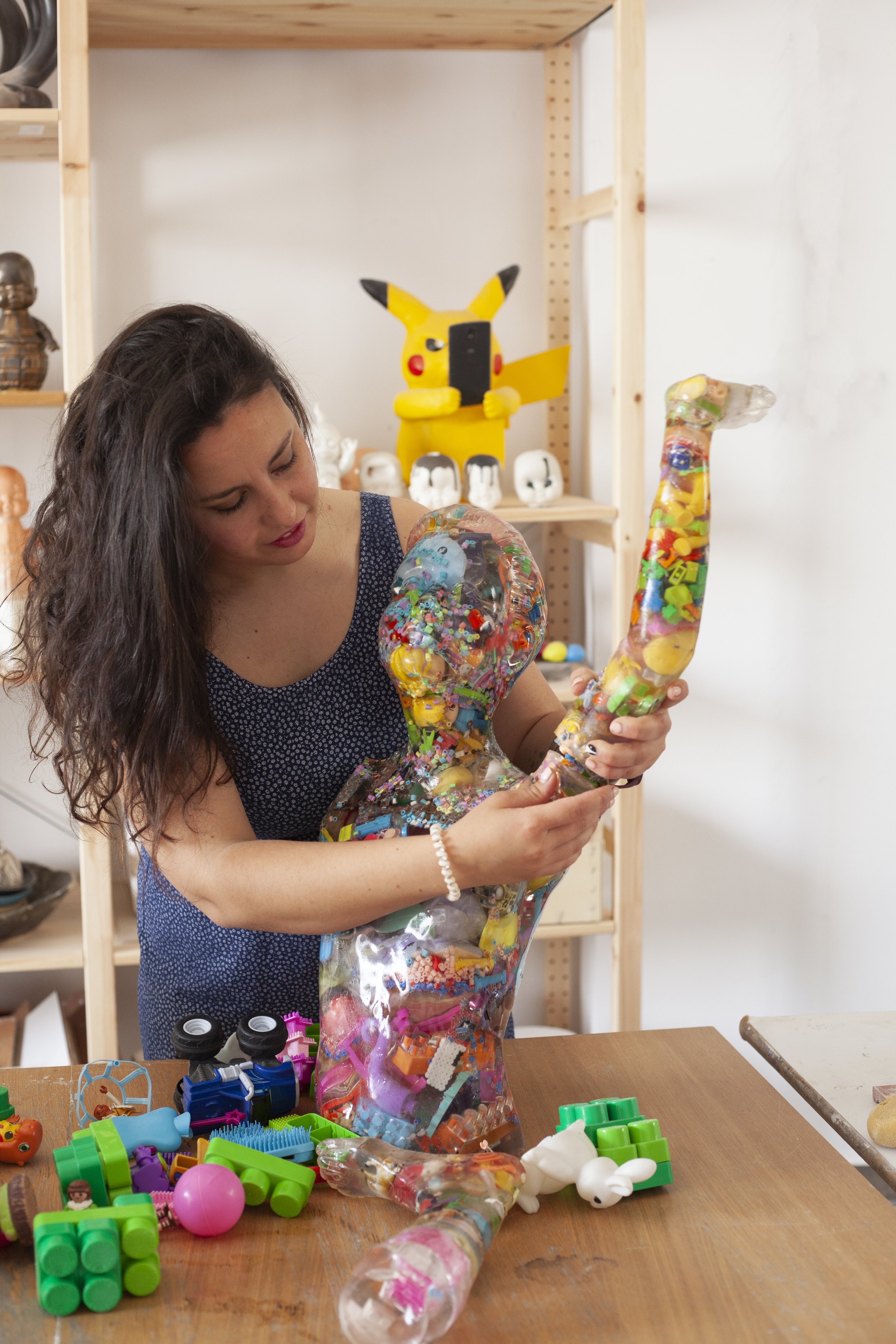Interview
Alba Refulgente
Alba Refulgente works and lives in Badalona, a residential city near Barcelona — an aspect that has influenced her artistic career.
Alba has been awarded several prizes for her work, and some of her pieces have found a permanent home at the U Arts Space of Chengdu (China) and La Doce de Boiro (A Coruña, Spain).
Alba is currently curator of the NEGOCIO exhibition, winner of the III Buit Blanc at the CC Las Cigarreras de Alicante (2018).
What is your background and how did you start your journey in the art world?
“I studied fine arts at the University of Barcelona, where I completed my studies with a Master's Degree in Artistic Creation, both with honorable mention. I’ve just finished my PhD on the game as an artistic medium at the same University, with the FPU scholarship for young researchers, and I also teach several subjects of sculptural processes.”
What does your work aim to say? Does it comment on any current social or political issues?
“I consider myself a multidisciplinary artist who refuses to choose among those considered traditional disciplines and the new means of artistic expression. My work is developed at the intersection of construction of critical thought, and the aesthetic investigation of materials. In this sense, I am interested in investigating the potential of painting, sculpture or drawing within other less conventional structures in art such as games, to emphasize or change the meaning of reality.
My artistic work is born from everyday life, between the relationship of the population with their objects. I’m currently working with toys found in the trash. I combine collective imaginary toys and games with ceramics to create my sculptures that always talk about the sociopolitical situation and dystopian futures.”


Which current art world trends are you following?
“In my work, several different underground influences coexist, such as comics, puppet theater, graffiti, video games and horror shows, along with other more conventional ones such as oil painting and ceramics. By building a bridge between these lines and the exhibition space, which I also consider a key aspect, I intend to awaken public participation. The use of the banal, the mainstream, the tacky, is a point of view with which I usually approach my work.”
“With my artistic practice, I do not intend to abduct the viewer and transport him to an idyllic world where beauty prevails. I propose everyday scenes taken from reality and transformed into works. With this, I pursue reflection more than emotion, to make the public draw their own conclusions.”
Do you plan your work in advance, or is it improvisation?
“I always walk around with a notebook to jot down any ideas that come to me that I can develop later. In this way, I have a collection of ideas, some of them primary and others more developed. Some end up discarded and for the others, I wait for the right moment to carry them out.”
What process, materials, techniques, etc., do you use to create your artwork?
“Nowadays, I work with toys found in the garbage. I combine them to create new imagery that talks about childhood and war, and the relationship between them.”
What does your art mean to you?
“It means everything. I think in art — I watch things and I transform them into art. That is the only way I can think.”
What’s your favorite artwork and why?
“I have many favorite artists, but most of them are contemporary underground artists such as Ron English, Cakes_Stencils, Freya Jobbins or Beeple Crap.”
Have you had any noteworthy exhibitions you'd like to share?
“I’ve been awarded several prizes, such as the 3rd Premio Reciclar Arte del Museo Íbero de Jaén, or the 1st Premio de los Premios de Otoño de la Villa de Chiva.
I have permanent work at the U Arts Space of Chengdu (China) and La Doce de Boiro (A Coruña, Spain).”
Website: www.albarefulgente.com
Instagram: @albarefulgente






